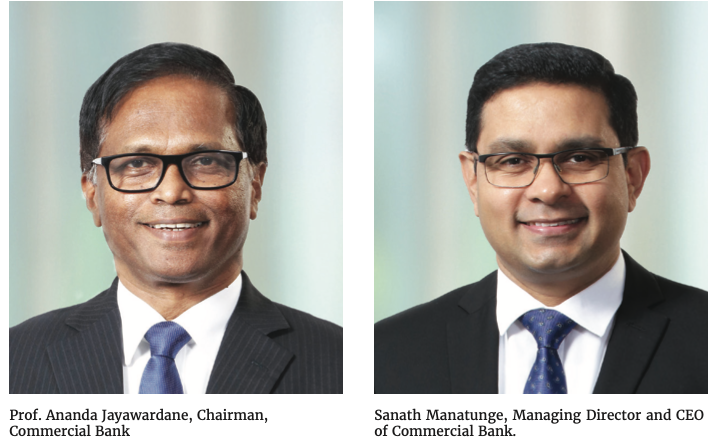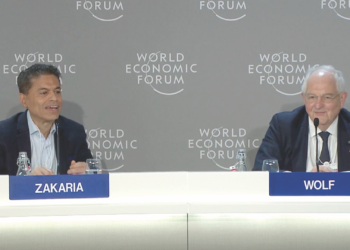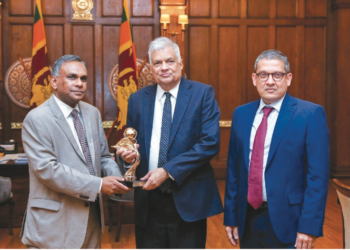
The Commercial Bank of Ceylon Group ended 2022 with a solid operational performance, having navigated the perfect storm with a series of forward-looking strategies that included making the highest-ever impairment provision in a year’s history.
In unprecedented macroeconomic variables, the Group comprising Sri Lanka’s biggest private sector bank, its subsidiaries, and an associate saw its assets grow by 516.063 billion rupees or 26.02 percent to approach 2.5 trillion rupees, gross income increases by 71.31 percent to 280.387 billion rupees. Interest income improves 67.44 percent to 222.393 billion rupees, with the sharp depreciation of the Sri Lanka Rupee exerting a distortionary impact on some key indicators.
In a filing with the Colombo Stock Exchange (CSE), the Group reported that the value of its loan book had grown by 151.239 billion rupees or 13.81 percent over the 12 months ending 31st December 2022, assisted by the impact of the sharp depreciation of the Rupee on foreign currency loans and advances. Discounting the impact of the Rupee depreciation, the loan book recorded marginal growth during the year amidst a sharp decrease in credit to the private sector. Deposits had increased by 505.103 billion rupees or 34.30 percent, with the depreciation of the Rupee also accounting for part of the growth. Deposits had increased by 505.103 billion rupees or 34.30 percent, with the depreciation of the Rupee also accounting for part of the growth.
The Group provided 71.924 billion rupees for impairment charges and other losses, an increase of 46.784 billion rupees or 186.10 percent. This reduced net operating income by 5.47 percent to 64.712 billion rupees for the 12 months and by 24.90 percent to 13.147 billion rupees for the fourth quarter. However, total operating income for the year had improved by a robust 43.038 billion rupees or 45.98 percent to 136.637 billion rupees.
Prof. Ananda Jayawardane, Chairman of Commercial Bank, said, “The domestic macroeconomic pressures emanating from the country’s deteriorating external financing position exerted severe stresses on the foreign currency liquidity and the capital adequacy of banks, making it necessary for managing liquidity to be given priority in the year under review. Although an increase in the cost of funds is inevitable, all possible steps have been taken to reprice and rebalance financial assets, increase fee-based income, and maintain non-interest costs at acceptable levels,” he said.
Sanath Manatunge, Managing Director and CEO of Commercial Bank, disclosed that a substantial portion of the impairment charge is due to Government Securities denominated in Foreign Currency, because of Sri Lanka’s Sovereign rating downgrade the debt restructuring program currently being negotiated by the Government. In this context, he said the Bank is determined to address issues relating to rebalancing the balance sheet, creating a culture of capital-based decision-making, divisional capital allocation, and aligning systems and processes to ensure a higher level of governance and cost-effective growth on a priority basis.
According to the Group’s financial statements for 2022, despite the heightened challenges of the fourth quarter of the year, gross income for the three months grew by 94.41 percent to 84.814 billion rupees while interest income improved by 97.14 percent to 72.136 billion rupees, partly due to an increase in interest-earning assets, rise in interest rates and higher foreign currency income due to the depreciation of the Rupee. However, interest expenses for the quarter rose 183.96 percent to 50.285 billion rupees in contrast to the increase of 107.42 percent reflected in the full year’s interest expenses of 137.728 billion rupees. The shift from low- cost to high-cost funds, resulting from the higher interest rates on Rupee deposits and the increased cost of living directly affecting savings, also caused a significant drop in the Bank’s CASA ratio. The Bank’s CASA ratio, an industry benchmark, stood at 38.36 percent at the end of the year reviewed, as against 47.83 percent at the end of 2021 and 42.72 percent at the end of 2020.
Consequently, while net interest income for the entire year improved by 27.48 percent to 84.665 billion rupees, the figure of 21.851 billion rupees for the fourth quarter reflected lower growth of 15.72 percent, as the full impact of the increased interest rates and the shift from low cost to high-cost funds was felt in the final quarter of the year.
The Group reported fee and commission income of 26.192 billion rupees for the full year and 7.986 billion rupees for the fourth quarter, with growth rates of 64.55 percent and 62.47 percent, respectively, with an increase in trade-related activities and the impact of the depreciation of the Rupee on fees received in foreign currency. However, a combination of higher card-related payments and the depreciation of the Rupee contributed to fee and commission expenses increasing by 63.87 percent to 6.022 billion rupees for the year. As a result, net fee and commission income improved by 64.75 percent to 20.169 billion rupees for the year and by 71.61 percent to 6.256 billion rupees for the fourth quarter. Other income comprising of net gains or losses from trading, net gains or losses from de-recognition of financial assets, and net other operating income more than doubled, growing by 112.87 percent to 31.802 billion rupees for the 12 months and grew by 121.49 percent to 4.692 billion rupees for the last quarter. A gain of 35.903 billion rupees on foreign exchange and substantial gains from swap transactions generated a net gain from trading of 35.297 billion rupees for the year, as against 1.936 billion rupees for 2021.
The Group posted a loss of 3.772 billion rupees in net other operating income due to a net loss of 5.133 billion rupees on revaluating assets and liabilities in the year under review. With operating expenses for the year rising 22.34 percent to 36.282 billion rupees due to higher personnel costs, depreciation and amortization, an increase in other operating expenses owing to price hikes, foreign currency payments for the maintenance of assets, and an increase in the VAT rate, the Group’s operating profit before taxes on financial services reduced by 26.73 percent to 28.430 billion rupees for the 12 months, and by 68.43 percent to 2.881 billion rupees for the fourth quarter. Consequently, the Group’s profit before tax of 24.505 billion rupees for the year reflected a drop of 25.65 percent over 2021.
Although the income tax rate increased to 30 percent for the second half of 2022, the impact of income tax on the Group’s results was reduced due to a reversal of the deferred tax computed at 24 percent for the previous year. As a result, net profit for the year improved by a marginal 0.45 percent to 24.399 billion rupees and grew by 69.53 percent to 8.939 billion rupees in the final quarter.
Taken separately, Commercial Bank reported a profit before tax of 22.598 billion rupees for the year, a drop of 29.38 percent, while profit after tax was down only by 2.7 percent to 22.970 billion rupees.
In terms of asset quality, the Bank’s impaired loans (Stage 3) ratio stood at 5.26 percent compared to 3.85 percent at the end of 2021, while its impairment (Stage 3) to Stage 3 loans ratio stood at 39.50 percent as of 31st December 2022, compared to 42.76 percent at end 2021. Regarding liquidity, the Bank’s statutory liquid asset ratios for its domestic and offshore banking units stood at 35.01 and 32.37 percent, respectively. In comparison, the consolidated liquid asset ratio for the Sri Lankan operations of the Bank stood at 35.88 percent, which is well above the minimum requirement of 20 percent.





